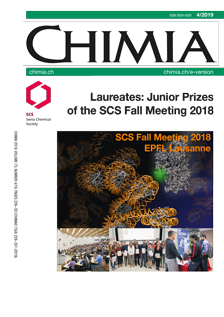Cellular Uptake Mediated by Cyclic Oligochalcogenides
DOI:
https://doi.org/10.2533/chimia.2019.304PMID:
30975261Keywords:
Cellular uptake, Dynamic covalent chemistry, Molecular walkers, Reactive intermediatesAbstract
Cellular uptake is one of the central challenges in chemical biology and beyond. With the objective to find conceptually innovative ways to enter into cells, cyclic oligochalcogenides (COCs) are emerging as powerful tools. Increasing ring tension is shown to maximize speed and selectivity of dynamic covalent exchange chemistry on the way into cells. However, simple dynamic covalent attachment immobilizes the transporters on membrane proteins, resulting in endosomal capture. To move across the membrane into the cytosol, dynamic covalent COC opening has to produce high acidity chalcogenols that remain deprotonated in neutral water and, according to the present working hypothesis, initiate COC walking along disulfide tracks in membrane proteins, across the bilayer and into the cytosol. Compatibility of diselenolanes, the current 'lord of the rings', with the delivery of larger substrates of biological relevance is currently under investigation.Downloads
Published
2019-04-24
Issue
Section
Scientific Articles
License
Copyright (c) 2019 Swiss Chemical Society

This work is licensed under a Creative Commons Attribution-NonCommercial 4.0 International License.
How to Cite
[1]
R. Martinent, Q. Laurent, N. Sakai, S. Matile, Chimia 2019, 73, 304, DOI: 10.2533/chimia.2019.304.







